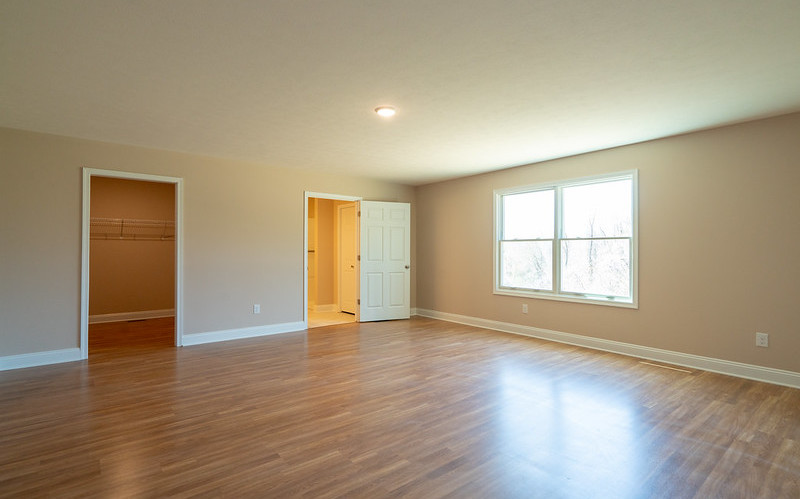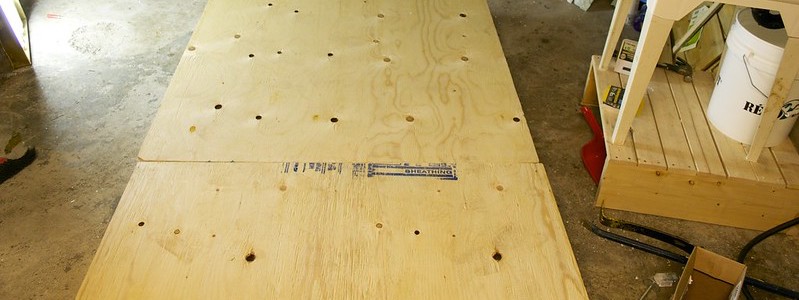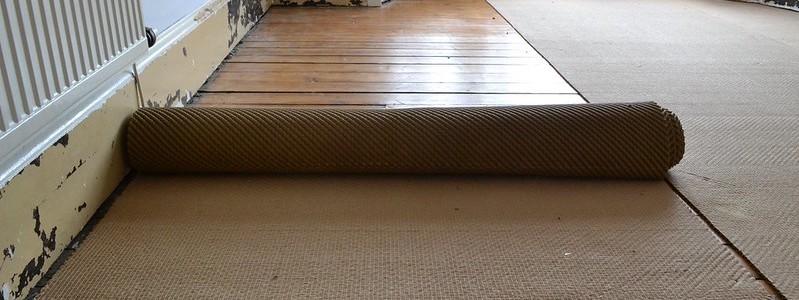Underlay for plank flooring - which one is the best?
If you have already decided on a vinyl plank flooring, you should probably choose a good quality underlay. It is a crucial element that determines the durability of your floor. The right underlay can minimize certain floor and room imperfections. It is, therefore, good to spend some time to choose the correct floor underlayment. It ensures lasting floor for years.

Is underlayment needed for vinyl flooring?
Some people believe that underlay is not necessary and that vinyl planks can be placed directly on the floor. Even though it is possible in some cases, it is not advised to lay vinyl flooring without underlay. What is underlayment? Without this element laminate flooring would be quickly destroyed, as the planks could get broken.
Floor underlay plays an important role for a vinyl plank floor - it secures the floor. The most important functions of underlay are:
- Cushioning - a soft, elastic layer under the planks secures them so that they do not bend under pressure. The underlay absorbs energy from hits and heavy objects, protecting the floor from damage.
- Thermal insulation - floor underlayment is a layer which separates the flooring from the subfloor. This way the cold air doesn’t reach the room. Such insulation reduces thermal loss which saves the costs of heating.
- Acoustic underlay - underlay absorbs sounds from rooms under the floor. The layer can also muffle noises from inside the room where the planks are installed.
- Evening the surface - a good underlay can cover minor imperfections of the floor. It fills small indentations and makes the planks more stable.
Keep in mind that most manufacturers of vinyl plank flooring require using underlay as a warranty requirement. If this condition is not fulfilled, you won’t be able to get a refund if the product you bought is faulty.
Regardless of the type of underlay, you should install it at 45 degrees angle. Using a vapour barrier is important, as it protects from moisture. It should be laid in a straight line. Then you can lay the underlay - make sure to cut it to fit the room.
Types of laminate flooring underlay
There are various types of underlay available. They differ from each other by price, durability, material and intended purpose. Type of the plank flooring doesn’t affect the type of underlay. You should consider, however, what are your own needs and expectations.

Natural flooring underlay
Natural underlayment is usually made of wood and similar materials. Such product are usually good acoustic insulators. The most common natural underlays are:
- Cork underlay - it is a good thermal and acoustic insulator. Usually they are sold in large sheets, 2 mm thick. Cork is quite a fragile material and therefore it shouldn’t be used under floors that are intensely used. The underfloor on which a cork underlay might be placed, should be perfectly even.
- Plywood - this material protects from noise and thermal loss, although not as well as cork. It’s thicker, sold in 4-7 mm thick sheets. Because this type of undelay absorbs water easily, you should put an additional layer of vapour membrane over it.
- Corrugated fiberboard - it is one of the cheapest underlays. It conducts warmth well, however does not isolate sounds. This type requires a perfectly even underfloor.

Synthetic flooring underlay
Synthetic underlay has many advantages. One of its best features is the fact that it basically does not absorb water. It also corrects minor surface imperfections. Popular synthetic floor underlays are made of:
- Foam - it is the most commonly chosen underlay - mainly for its cheap price. It is waterproof, however it does not isolate from sounds.
It loses its shape relatively quickly and it cannot be used under wooden boards.
- Polyethylene (PE) - it can be used if the underfloor is uneven, as it can fix small imperfections, up to 4 milimetres. It is a good thermal and acoustic insulator.
- Polystyrene (XPS) - such underlay muffles noises well. It is waterproof and very durable. It does not conduct heat, therefore it can be used on floors that are located over unheated rooms.
What is the best laminate underlay?
No underlay is the best or universal. Every type of product has different qualities that fit different needs. For this reason one needs to consider various aspects before choosing the right underlay.
Underlay for floor heating
If you lay vinyl plank flooring over floor heating, you should choose an underlay without heat insulation properties. Wrong underlay could hinder the heat, cooling down the room. Therefore an underlay for floor with heating system should conduct heat well.
Corrugated fiberboard is one of the best underlay for vinyl plank flooring with floor heating.
Paper underlays are good heat conductors, however they do not isolate the room acoustically. If this is what you need the most, a good choice is underlay made of polystyrene (XPS). It does not conduct heat, but it has special holes that let the heat move through.

Underlayment for floor isolation
If the room in which you decided to lay laminate boards is located over an unheated room or on the ground, the underlay should provide good heat insulation. It means that the material shouldn’t conduct temperature. The best underlays of this type are made of polyethylene and polystyrene.
If acoustic insulation is your priority, cork underlay is worth choosing. Depending on the thickness, it absorbs even up to 25% of sounds. Polystyrene underlay is another good choice - it reduces sounds to 19 dB.
Underlay for an extensively used floor
Not every type of underlay is suitable for a heavily used floor. Cork or foam might not be durable enough and they could get damaged very quickly. Therefore for rooms such as halls and living rooms it is good to choose an underlay which is resistant to mechanical damage.
One of the most durable materials is polystyrene. Quartz underlay is probably the strongest, however it is quite expensive.
Allergy-proof underlay
If an allergy sufferer is going to live in the room with vinyl flooring, the material used for underlay needs a special attention.
An allergy-proof underlay for vinyl plank flooring must not release any dust - therefore using plywood in this case is not advised. Material of this type is quite dusty, which might be irritating or even dangerous for an allergy sufferer.
The best natural material for this purpose is cork underlay. Its main advantages is resistance to moisture, as well as mould and fungi. Alternatively you can use a plastic material underlay which does not absorb water nor release any dust.
Finishing your house might be quite a difficult process. Many homeowners ask specialists: what is the best laminate underlay? A good underlayment for kitchen flooring and other home interiors is a guarantee that your vinyl plank floor is going to last long. It might also have some additional features. One should consider what criterion is the most important for them and use it to choose the right product. If you have a problem with making the decision, you should ask a salesperson to help you.
Apart from choosing the right underlayment, you should also learn what other mistakes to avoid when finishing your apartment.
Underlay for plank flooring - FAQ
📍 How to install underlay?
Any type of underlay should be installed at 45 degrees angle to the direction the plank boards are going to lay. Make sure to cut the underlay to perfectly fit it to the room.
📍 How to lay underlay for underfloor heating?
Underlay for underfloor heating should be installed the same way as any other underlay. For this type, the vapour barrier is mandatory. The best laminate underlay for floor heating is polystyrene and corrugated fiber.
📍 What is the best underlay for laminate flooring?
Any type of underlay is good and one should fit the right product to their particular needs. Underlay can serve many functions, such as acoustic or warmth isolation.
Featured articles




